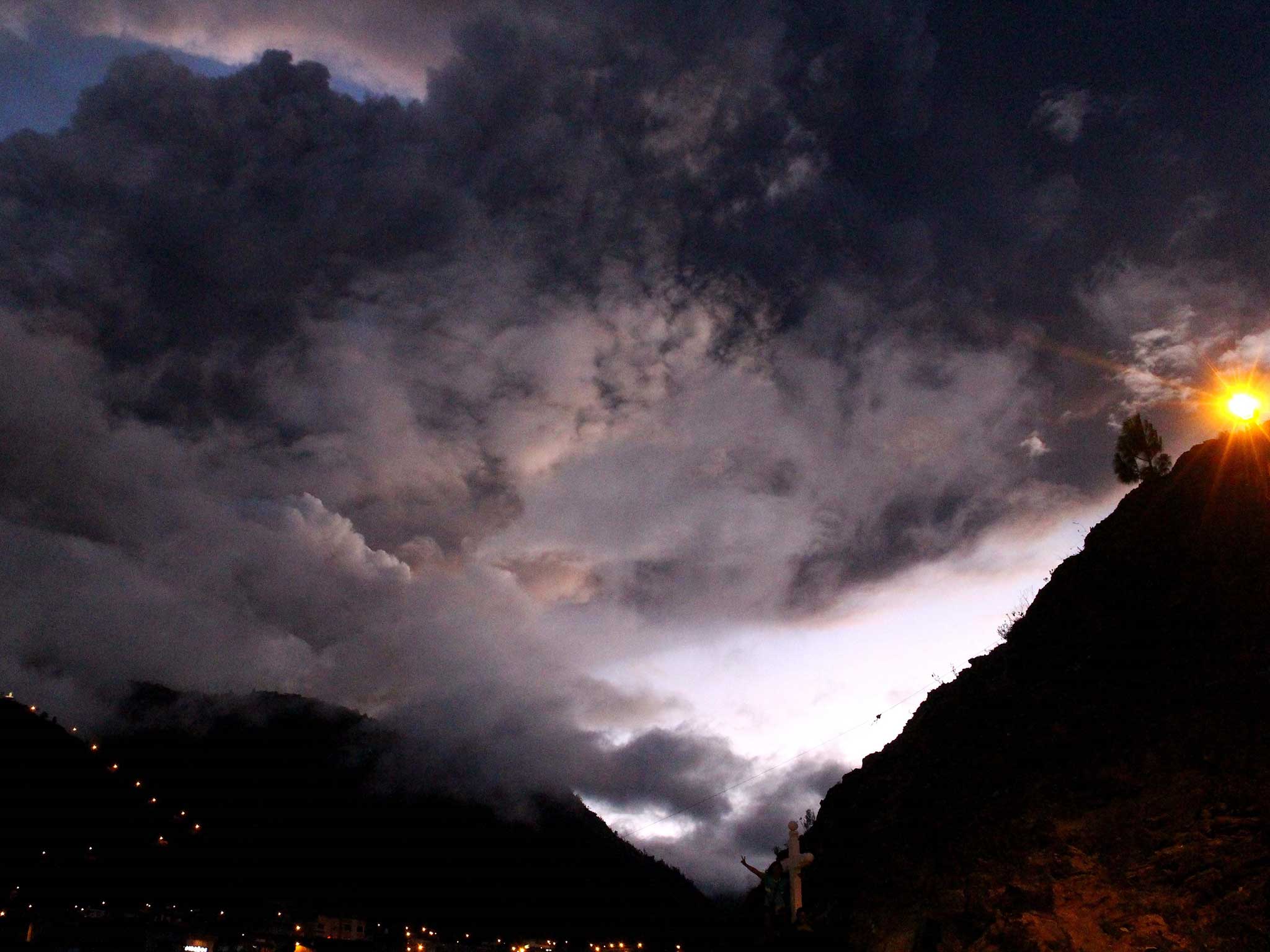Ecuadoran volcano called 'Throat of Fire' in local language starts spewing ash 28,000ft into air
The eruption is latest after months of activity around Tunguarahua volcano

Your support helps us to tell the story
From reproductive rights to climate change to Big Tech, The Independent is on the ground when the story is developing. Whether it's investigating the financials of Elon Musk's pro-Trump PAC or producing our latest documentary, 'The A Word', which shines a light on the American women fighting for reproductive rights, we know how important it is to parse out the facts from the messaging.
At such a critical moment in US history, we need reporters on the ground. Your donation allows us to keep sending journalists to speak to both sides of the story.
The Independent is trusted by Americans across the entire political spectrum. And unlike many other quality news outlets, we choose not to lock Americans out of our reporting and analysis with paywalls. We believe quality journalism should be available to everyone, paid for by those who can afford it.
Your support makes all the difference.An Ecuadorean volcano is spewing ash five miles into the air, closely monitored by experts, after an eruption this weekend.
Ash from the Tunguarahua volcano, whose name means ‘Throat of Fire’ in the local Quechua language, was blown five miles, 28,000 ft, into the sky and drifted west.
It was the latest eruption from the volcano after a period of calm.
Tunguarahua volcano erupted on 29 July, 4 August and then again on 19 August.
Homes nearby have felt the strength of the eruptions, with the blast causing windows and roofs to vibrate.
Over the weekend the volcano started spewing small pyroclastic flows, a fast-moving current of hot gas and rock which can reach speeds of 450mph and temperatures of about 1,000 C.
The volcano has been classified as active since 1999, with frequent powerful ash explosions producing ash plumes and dangerous pyroclastic flows part of the population around the base has been evacuated.
It is located in the Andes, 87 miles south of the capital Quito.
It's a another blow for the aviation industry which is already reacting to the Icelandic volcano, which last night downgraded its aviation warning back to orange from red, and an eruption in Papua New Guinea disrupting air travel.
Join our commenting forum
Join thought-provoking conversations, follow other Independent readers and see their replies
Comments